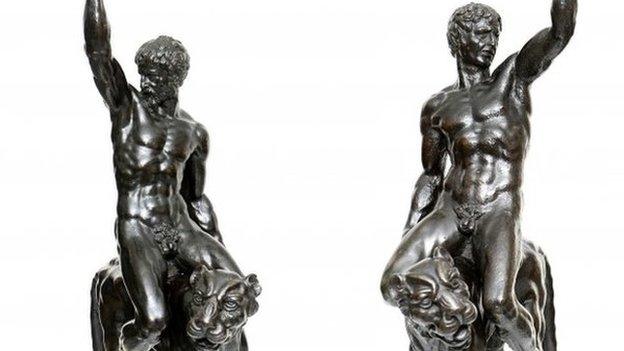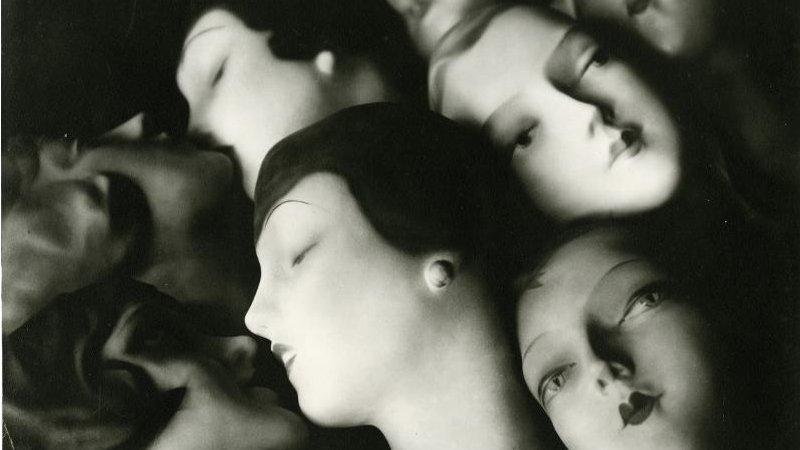Cambridge exhibition includes 'rare' death mask with hair
- Published

The duke was nicknamed the king of hearts and he died aged 57 in 1718
A "rare" 18th Century death mask, with eyebrows and eyelashes made from hair, is to go on display for the first time.
The wax model belongs to the Fitzwilliam Museum in Cambridge and is of Charles Talbot, Duke of Shrewsbury.
It is one of two masks in the museum's Treasured Possessions exhibition, 80% of which is taken from its vaults.
Death masks were "standard practice" for "eminent individuals", but co-curator Dr Victoria Avery said one using hair was "so unusual".
The duke's model may have been used for the head of his funeral effigy.
'Incredibly rare'
It is not known when Richard, 7th Viscount Fitzwilliam, acquired it, but it formed part of the art collection he bequeathed to Cambridge University in 1816.

Death masks, like this one of John Howard, fell out of favour as the 19th Century progressed
The second death mask will also be seen by the public for the first time and is "incredibly rare", according to the museum.
It is of John Howard, a philanthropist and social reformer, after whom the Howard League for Penal Reform, external is named.
While examining Russian military hospitals he contracted typhus in Kherson, Ukraine, and died in 1790.
The plaster mask was created in Russia and survived the journey home to be given to Howard's executor, Samuel Whitbread.
His son gave the model to the museum in 1822.

Other items never before put on display include a 17th Century French skull-shaped watch

These "rarely seen" early 18th Century shoes are "straights" - the left and right shoe are the same shape
The Fitzwilliam Museum's Treasured Possessions from the Renaissance to the Enlightenment features 300 objects from the 15th to 18th Centuries, including some of its "least-known treasures".
Co-curator Dr Mary Laven said: "Today... many of our acquisitions end up on the scrap-heap or boxed away.
"Before industrial mass production... the most significant things in life were hand-crafted in homes and workshops, customised for their owners."
Many of the items have not been shown before as the museum normally displays artefacts in the context of similar objects, a spokesman said.
"This is the first time we have been able to devote part of a gallery to mementos and funerary items of this type."
The exhibition runs from 24 March until 6 September.
- Published2 February 2015

- Published10 August 2014
